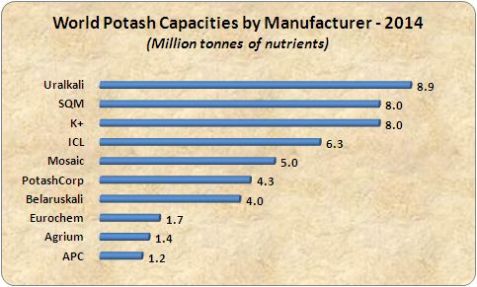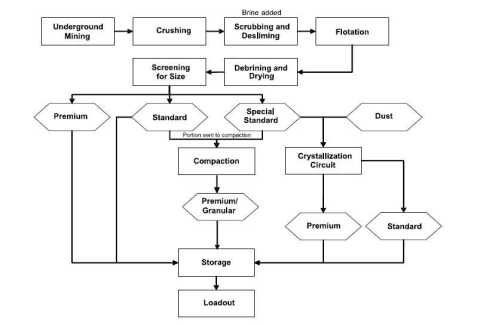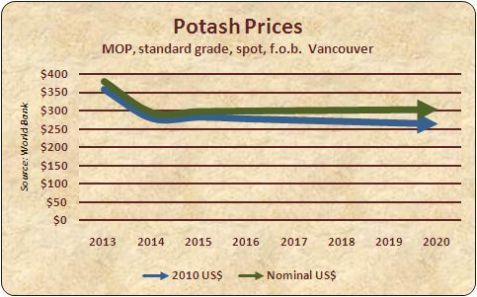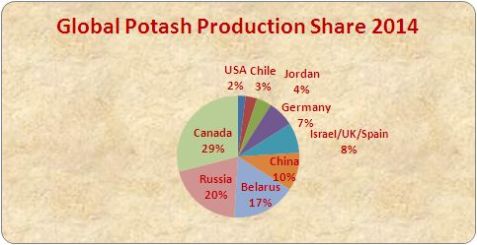Potassium is an essential plant nutrient and an essential nutritional requirement for both humans and animals, for which there is no effective substitute. Potassium is used to make fertilizer, biofuels, gunpowder, and various industrial chemicals. About ninety percent of potash is used for fertilizer manufacture. Potassium Chloride (KCl) is the most common source of potassium. The mineral plays a vital role in crop growth and helps plants resist cold and drought. Due to its high chlorine content, MOP is widely used in chlorine resistant crops such as wheat, rice, soya, maize, and pastures.
Potassium intake is also important in animal nutrition and milk production.
Potassium sulphate and potassium nitrate are the main non-chloride K fertilizers.

Potash reserves are concentrated in just a few areas: major producing regions include the FSU, North America, Germany, and the Dead Sea area.

Compared with other fertilizer nutrients, the potash industry is much consolidated, with Canada, Russia, Belarus and Germany accounting for more than 3/4 of world production. There are about twelve large potash manufacturers, most of them non-governmental owned.


Source: Agrium Fact Book 2014-2015
Potash changes are driven mainly by the demand of the global fertilizer industry, in particular the Indian and the Chinese one, but also by the growth of the agrofuel production. The key crops influencing the potash price are first of all corn, and then soybeans and rice.
Potash Production Process


